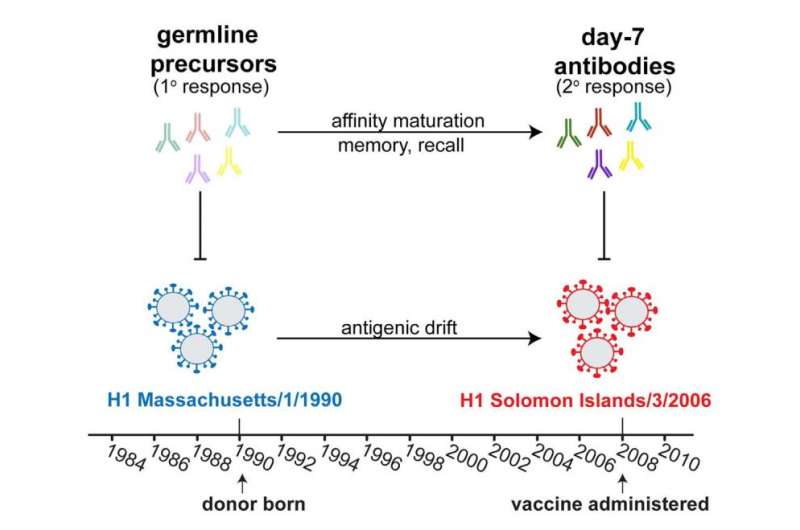First flu exposure imprints itself on immune system

A person's first infection with the influenza virus likely stimulates the production of key antibodies that then shape later immune responses to different seasonal influenza strains. In a study published December 17th in Cell Reports, Harvard researchers provide insights on how exposure to the flu impacts the immune system, which could be valuable for designing more effective and longer-lasting vaccines.
Investigators led by Stephen Harrison, of Children's Hospital and Harvard Medical School, have been examining how antibodies evolve over the years as a person is exposed to different seasonal influenza strains. The researchers focused on one individual who reported that he received his first flu vaccine at 18 years of age, and they looked particularly closely at antibodies that target a site—called hemagglutinin—on the influenza virus that's necessary for binding to a host cell.
"The virus cannot tolerate changes at the center of this site, which is essential for infection," Harrison explains. "Because they target a site that can mutate only at its edges, these antibodies can block infection by a large number of different influenza viruses."
By examining the various seasonal influenza strains that came and went while this individual was growing up, the team found that viruses circulating around the time of the person's birth were likely responsible for eliciting the initial immune response involving antibodies that bind viral hemagglutinin. In other words, the person probably caught the flu as a small child, which led to the production of antibodies against hemagglutinin that were important in later immune responses against other seasonal influenza strains.
"The approach demonstrates how early imprinting of our immune system by exposure to a particular virus can influence our response to later encounters," says first author Aaron Schmidt. The investigators also found that vaccination at the age of 18 stimulated and updated the initial antibodies against hemagglutinin. They hope to conduct additional experiments in other individuals to see how annual vaccinations or influenza infections might continue to impact these antibodies over time.
The findings suggest that vaccinating infants against the conserved regions of hemagglutinin might be a constructive step toward a vaccine that elicits long-lasting immunity. "But a lot more work is needed to test this suggestion," Harrison says.
More information: Cell Reports, Schmidt et al.: "Immunogenic stimulus for germline precursors of antibodies that engage the influenza hemagglutinin receptor-binding site" dx.doi.org/10.1016/j.celrep.2015.11.063


















